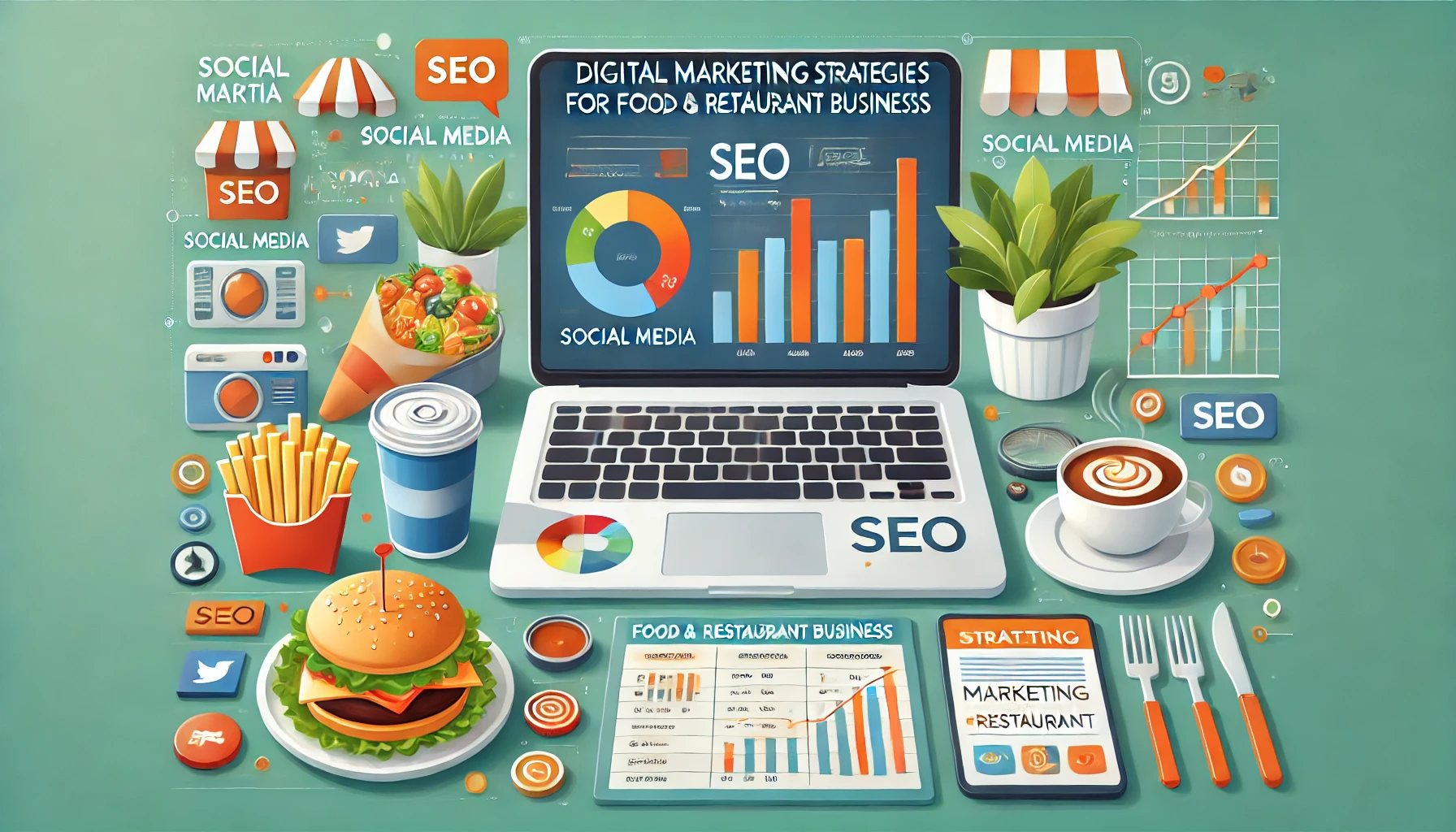
You could serve the most mouthwatering dishes in town, but if hungry customers can't find you online, you're basically invisible.
Here's something that might surprise you: 90% of guests research a restaurant online before dining, more than any other business type. These potential customers are actively searching for their next dining experience, and they're making decisions based on what they find about you.
Instagram leads the way for about 60% of diners, though plenty of others check Google reviews, browse delivery apps, or follow social media suggestions. When you're not connecting with customers in the spaces they already love spending time, you're leaving real money on the table.
8 Digital Marketing Strategies for Restaurant Businesses
I'm about to share a few of the important digital marketing strategies for restaurant and food and restaurant marketing ideas that I've seen work time and time again.
1. Restaurant Website Optimization
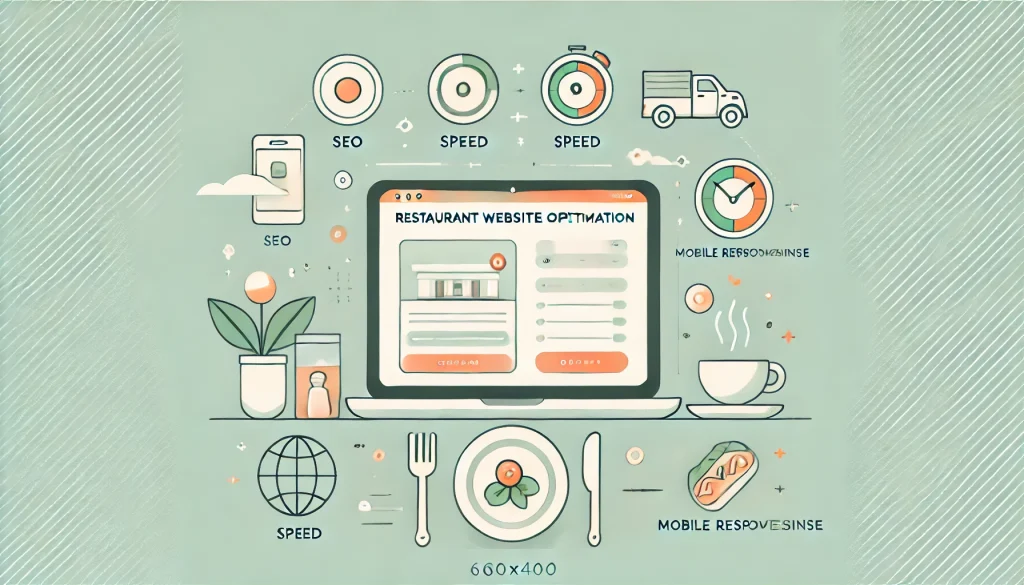
Think of your website as your restaurant's front door. It's where most people form their first impression of your business.
Here's the reality: almost 70% of diners said that poor website design or functionality discouraged them from going to the restaurant. That's a staggering number of potential customers you could be losing before they even taste your food.
Mobile-First Design
Your website needs to work flawlessly on smartphones, period. 71% of consumers prefer using restaurant-specific websites or mobile apps over third-party apps, and three-quarters of consumers would use smartphone apps for placing orders at quick service restaurants if offered.
Mobile-first simply means you design your website keeping mobile phone users in mind. Your menu needs to be easy to scroll through, buttons should work perfectly with thumbs, and everything better load super fast.
Essential Website Features
Your website needs to work as hard as your kitchen staff. Online ordering isn't optional anymore. 64% of customers prefer to place their orders digitally at quick-service restaurants, and those numbers keep climbing. But beyond ordering, you need seamless reservation systems, downloadable digital menus, and clear contact information.
2. Content Marketing for Restaurants
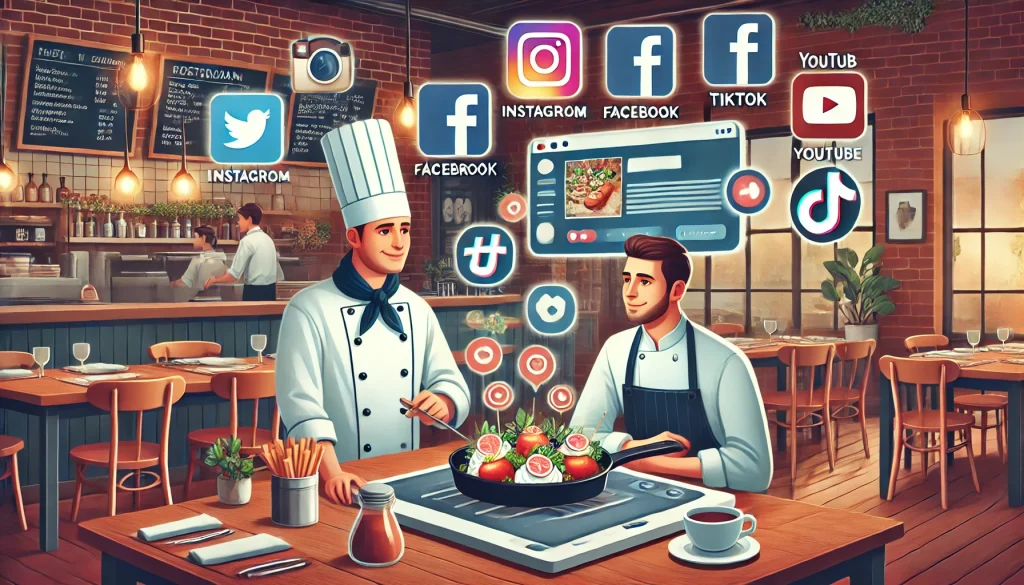
About two years ago, I was helping a small Italian bistro struggling to fill seats during lunch hours. Their food was incredible. But they were practically invisible online. We started restaurant digital marketing and kept documenting everything. Every dish, every smile from the kitchen, every story.
Instagram-Worthy Dish Photography
Nearly half of your potential customers are making dining decisions based on pictures they see scrolling through their Instagram feeds. You don't need a $5,000 camera to make your food look amazing. Restaurants create amazing photos with nothing more than decent lighting and their phone. Natural light is where it's at.
Behind-the-Scenes Content
Your customers aren't just buying food, they're buying an experience, a story, a feeling. 84% prefer to see photos of food and drinks served at the restaurant, but they also want to see the magic happening behind the scenes.
User-Generated Content
Nearly half of your customers are already photographing their meals. Don't just sit there hoping they remember to tag you. Encourage them to do it. Launch a hashtag challenge, comp a dessert for whoever captures the best shot, or design a photogenic corner that practically screams "take a picture here."
Seasonal Storytelling That Sells
Every season brings new ingredients, new flavors, and new reasons for people to visit. Spring means fresh meals and the story of where you source them. Summer calls for those perfect tomato dishes and the farmer who grows them just for you. Don't just announce "Fall menu is here!" Tell the story of why pumpkin spice became America's obsession, then share your unique twist on the trend.
3. Restaurant Social Media Marketing
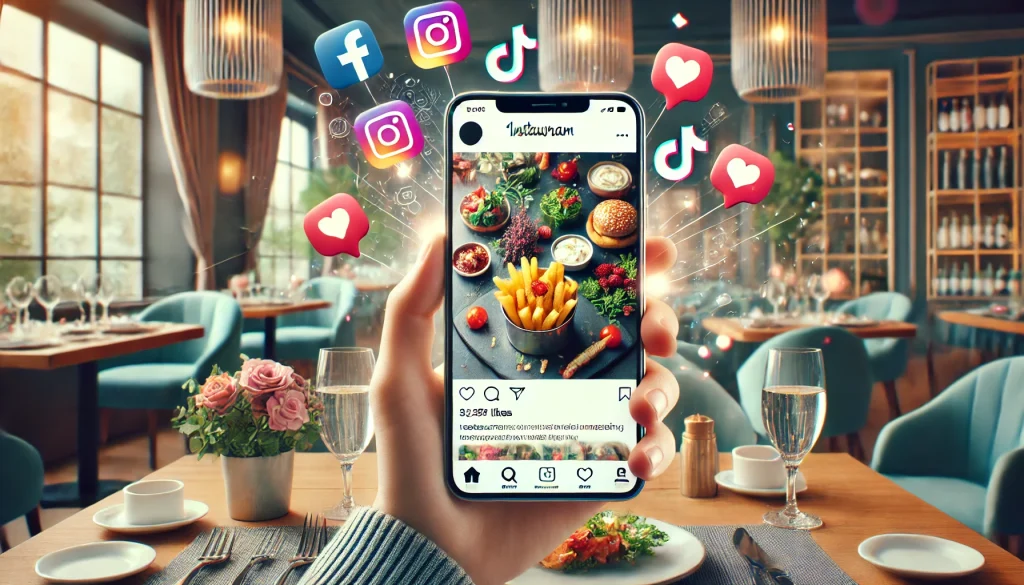
Here's something that should grab your attention: 56% of restaurant owners believe online advertisements drive more customers to their establishments than conventional advertising. We're not talking about a small advantage here. Social media has completely transformed how restaurants attract customers.
Restaurant Instagram Marketing for Visual Showcase
About 60% of people scroll through Instagram when they're looking for new places to eat, so it's basically your biggest chance to get discovered. But here's where most restaurants fail. They figure Instagram is just snapping pics of their food and calling it done. Your Instagram game needs three parts:
- Feed posts for your absolute best stuff
- Stories for the everyday behind-the-scenes
- Reels for whatever's trending and worth sharing.
Facebook Marketing for Showcasing Foods
More than 50% of people use Facebook to find and learn about restaurant events. You can also use Facebook for your wine dinners, live music nights, and special celebrations. Create events, encourage RSVPs, and build anticipation. Your local community is still very active here.
YouTube for Long-Form Storytelling
Create cooking tutorials, virtual restaurant tours, or chef interviews. This platform builds authority and trust in ways that short-form content can't match.
4. Local SEO

Imagine this: it's 7 PM on a Tuesday, someone's got a serious Thai food craving, and they grab their phone to search "best Thai food near me." That hungry person could be sitting at your table in an hour if you've nailed your local SEO game. If you haven't? They're probably already placing an order with the place down the street. Here's the crazy part—76% of people who search locally on their phone actually show up somewhere within a day, and 28% of them end up buying something.
Location-Based Keywords Targeting
Every time I check out restaurant websites, I can't believe how many are missing the easiest wins. When someone types "Italian restaurant in downtown Phoenix," they're literally spelling out what they want and exactly where they want it. But restaurants keep chasing vague stuff like "authentic Italian food" instead of owning their actual neighborhood.
Cuisine-Specific Local Targeting
Don't just target "restaurant near me." Get specific with your cuisine type: "Mexican food [your city]," "brunch spots downtown [your area]," "family-friendly dining [your neighborhood]." These longer, more specific searches have less competition and higher conversion rates.
Menu Item Optimization
Here's where restaurants really miss out. People don't just search for restaurants, they search for specific dishes. "Best fish tacos near me," "chicken tikka masala delivery," "gluten-free pizza in [location]."
If your signature dish is mentioned on your website with your location, you're capturing searches that your competitors probably aren't even thinking about.
NAP Consistency
NAP stands for Name, Address, Phone. Its consistency across every single online mention is absolutely critical. Restaurants lose rankings because their address was listed as "123 Main St" on one directory and "123 Main Street" on another.
Search engines need to verify that all mentions of your business are talking about the same place. Every instance of your business information must match exactly, including punctuation marks and abbreviations.
Google My Business
Let me tell you about the biggest mistake I see restaurant owners make in applying restaurant advertising strategies. They ignore Google My Business until something goes wrong. I learned this lesson the hard way when a friend's pizza place was losing customers to competitors simply because their GMB profile looked abandoned.
When someone's hungry and searching "pizza near me" or "best tacos downtown," restaurant Google My Business is your chance to grab their attention before they even see your competitors.
Profile Optimization
Double-check that every detail is correct—your hours, phone number, address, and website all need to be perfect. When you're picking categories, don't settle for the generic "Restaurant" option. Get specific about what you actually serve. Are you a "Pizza Restaurant," "Mexican Restaurant," or "Fast Food Restaurant"? Here's why it matters: about 34% of local businesses pop up in over 1,000 searches every month, so being exact helps you show up when people are looking for exactly what you offer.
Food Photography
Your photos need to make people's mouths water through their phone screens. I've seen restaurants transform their customer flow just by updating their GMB photos. Skip the generic stock photos. Use real images of your actual dishes, your dining space, and your team in action.
Review Management
When it comes to online reviews, Google practically owns the game. Here's something most restaurant owners don't realize about restaurant review management: handling a bad review gracefully actually wins over future customers better than pretending problems don't exist. Set up Google alerts for your restaurant name.
Posting Schedule
Post your daily specials, whatever events you've got coming up, new dishes you're trying out, and all those fun moments happening in the kitchen. I'd say hit it at least twice a week, but every day is gold if you can pull it off. Think of it as your own free billboard that keeps itself fresh.
5. Email and SMS Marketing for Direct Customer Connection
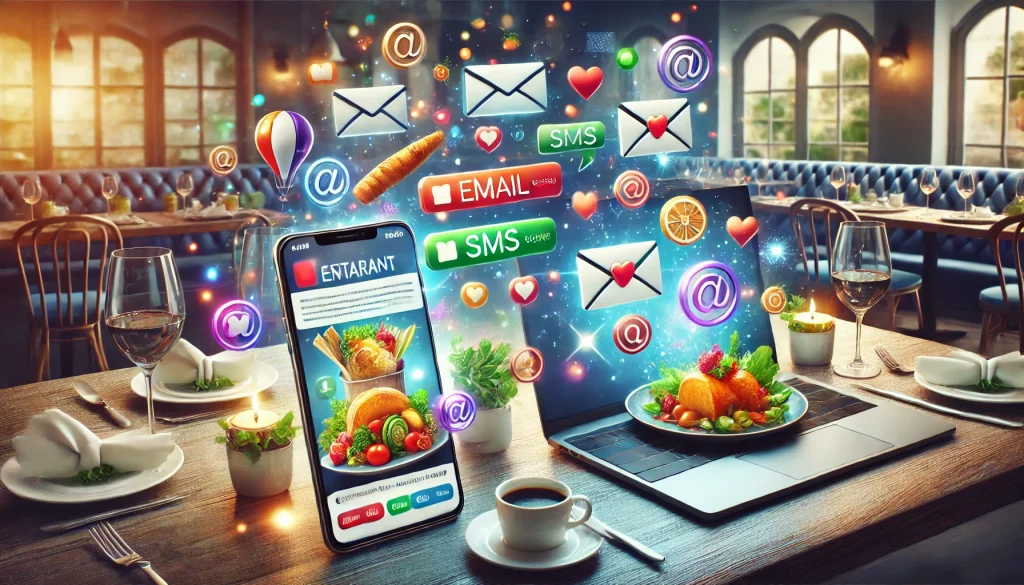
Last year, I helped a family-owned Mexican restaurant build its first email list. They started with 47 subscribers. Within eight months, they had over 2,500 active subscribers and were generating an extra $15,000 per month just from email campaigns. The secret? They treated their email list like VIP customers, not just marketing targets.
Restaurant Email Marketing
Welcome Series:
When someone joins your newsletter, they're basically telling you, "Hey, I want to know more about your place." Don't blow that moment with some boring "Thanks for signing up" email. Put together a welcome series that shares your story, shows off what you do best, and maybe throws in a little something to get them through your door.
Special Occasion Marketing
64% of restaurateurs are now sending personalized offers to their customers, and there's a good reason for this trend. A simple "Happy Birthday! Enjoy a complimentary dessert on your special day" email can turn a regular customer into a loyal advocate.
WhatsApp and SMS Strategies
Here's the crazy part - almost every single text message gets read, with SMS pulling in a jaw-dropping 98% open rate. Most people check these messages within minutes of getting them.
Reservation Management
Text them right when they book, hit them with a reminder the day before, and check in after their meal. It's not just being nice—you'll see fewer people skip out on you, plus it opens the door for reviews and getting them back again.
Real-Time Promotional Offers
"Today only: 20% off our famous fish tacos. Show this text to your server." These flash promotions work incredibly well because they create urgency and exclusivity. Your SMS subscribers feel like insiders getting special deals.
Order Updates
Whether it's "Your order is being prepared" or "Your driver is 5 minutes away," these updates reduce customer anxiety and improve their overall experience with your restaurant.
Post-Visit Review Requests
Send a thank-you text 2-3 hours after their visit with a simple request: "How was your dinner tonight? We'd love a quick review!" The timing matters. They've finished eating, but the experience is still fresh.
Tools That Make It Simple
Companies like Cunnekt, Twilio, and Yellow.ai have taken the headache out of SMS and WhatsApp marketing for restaurants, no matter how big or small you are. These platforms do the heavy lifting - they handle the boring stuff like automation and legal compliance while playing nice with whatever systems you're already using.
6. Paid Advertising That Delivers ROI
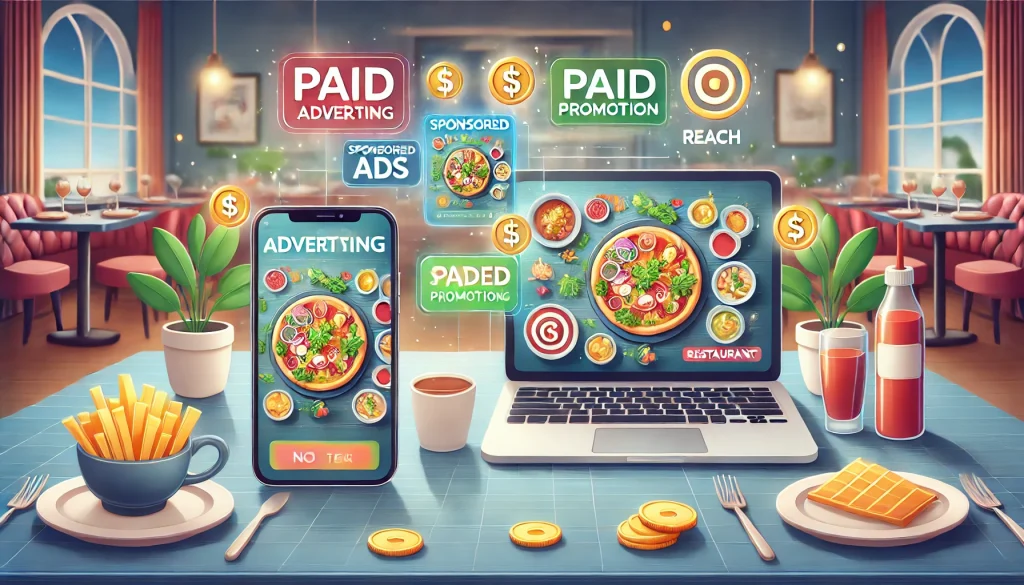
Restaurant PPC advertising generates a 200% return on investment on average, with businesses earning $2 for every $1 spent. But here's the catch: you need to know what you're doing.
Google Ads for Restaurants
Search Ads
When someone types "Italian restaurant near me," they're not window shopping—they're starving and want to pick a place now. People who click on ads are 50% more likely to actually buy something compared to those who find you through regular search results, and 80% of folks are way more likely to click your ad if you mention where you're located.
Display Ads
Display ads work differently. They're about getting your restaurant in front of people who might not be actively searching for food right now, but will remember you when they are hungry.
Paid Social Media Advertising
Facebook and Instagram (Meta) ads
Meta Ads for restaurants are all about the visuals and the targeting. Store visits increase by 80% within the first day of a mobile ad being served, making location-based targeting incredibly powerful for restaurants.
Location-Based Targeting
Set up geo-fencing around your restaurant, your competitors, and areas where your ideal customers live or work. Target people within a 3-mile radius during lunch hours, or expand to 10 miles for dinner service. The precision of social media targeting means you're not wasting money on people who'll never visit.
7. Influencer Marketing and Partnerships
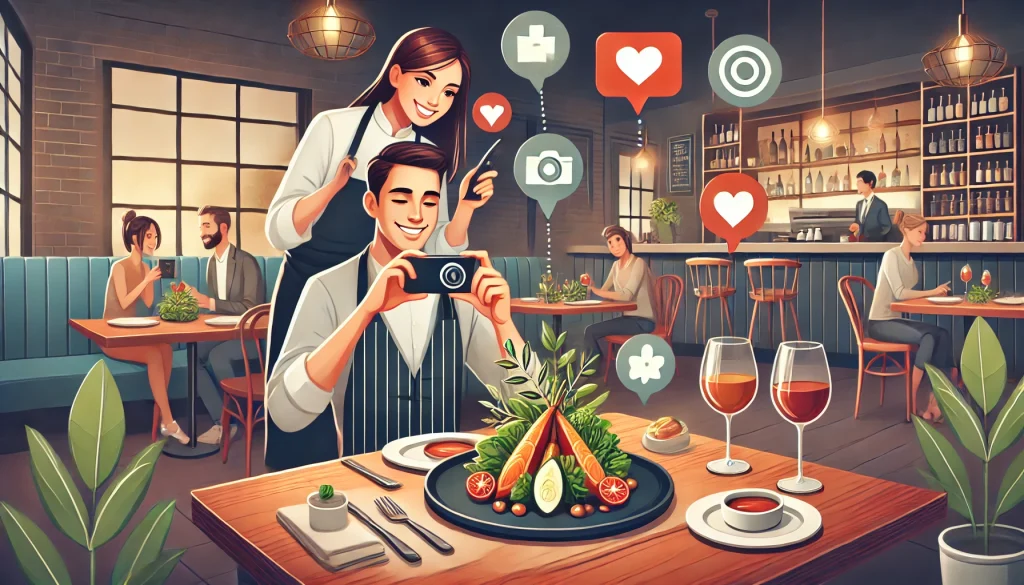
Local Food Influencers
Forget celebrity chefs with millions of followers. I've seen restaurants get incredible results working with restaurant influencer marketing by collaborating with local food bloggers who have 5,000-20,000 engaged followers. These micro-influencers have something mega-influencers can't buy: authentic relationships with their audience. Food influencer marketing achieves an engagement rate of 7.38%, significantly higher than most other industries.
Micro-Influencer
Start small and build relationships. Invite local food bloggers for a complimentary meal, not just a free meal, but an experience. Walk them through your menu, introduce them to your chef, and share the story behind your signature dishes. The content generated from one evening can provide weeks of social proof.
8. Video Marketing for Food Restaurants
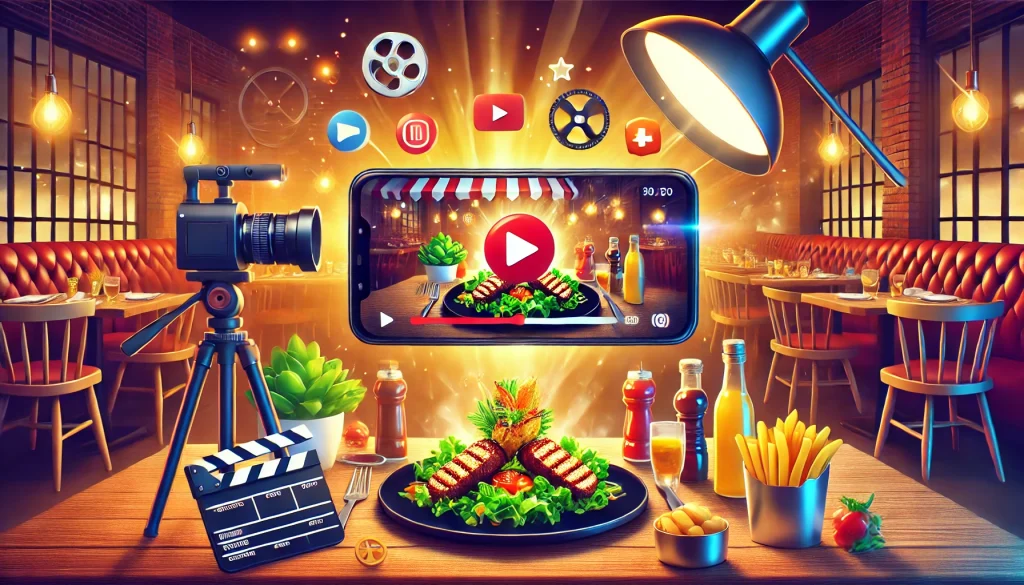
Here's what every restaurant owner needs to understand: 78% of users report getting more website traffic after using videos, and approximately 80% of consumers say they watch restaurant-related video content. Video content doesn't just drive views, it drives action.
Kitchen Tours and Chef Interviews
Show your prep cooks dicing vegetables, your grill master getting the perfect sear, or your pastry chef decorating a wedding cake. Chef interviews work incredibly well because they put a face and personality to your food.
Customer Testimonial Videos
Real customers sharing genuine reactions to your food carry more weight than any professional food delivery marketing advertisement in place. Capture moments when customers are genuinely enjoying their meal, that first bite reaction, the laughter during a celebration dinner, the satisfied look after finishing a signature dish.
Video Content Platforms for Maximum Reach
YouTube Videos
YouTube is the second-largest search engine, and 74% of consumers prefer video over text when learning about products or services. Optimize your YouTube videos with location-based keywords, detailed descriptions, and consistent branding. This content often ranks in Google search results, giving you additional visibility.
Instagram Reels and Stories
Instagram Reels get significantly more reach than regular posts. Create quick tutorials, showcase daily specials, or jump on trending audio with your own restaurant twist. Stories work perfectly for behind-the-scenes content and polls asking followers what they want to see next.
Facebook Videos
Use Facebook's targeting capabilities to show your videos to people in your area who are likely to dine out. Video ads on Facebook get higher engagement rates than static images and can drive real foot traffic to your restaurant.
Key Performance Indicators to Measure Performance

Website Traffic and Conversion Rates
Track not just how many people visit your website, but what percentage actually make reservations, place orders, or call your restaurant. A 2% conversion rate might sound low, but if you're getting quality traffic from local searches, that's solid performance.
Focus on pages per session and time on site. If people are bouncing immediately, your website isn't doing its job. If they're spending time reading your menu and exploring your story, you're building the connection that leads to visits.
Social Media Engagement
Forget follower counts. Track meaningful engagement. Comments, shares, saves, and story interactions show real interest. But here's what matters more: track how social media traffic converts on your website. Use UTM codes to see which platforms actually drive reservations and orders.
Email Performance Metrics
With email ROI hitting 4400% for restaurants, these numbers are crucial. Track open rates (aim for 20-25%), click-through rates, and most importantly, conversion rates from email campaigns to actual bookings or orders.
Online Reservations and Order Volume
These are your direct revenue metrics. Track week-over-week growth, seasonal patterns, and which marketing campaigns correlate with booking spikes. Customer acquisition cost should be balanced against customer lifetime value.
Conclusion:
Your digital marketing strategy doesn't have to be perfect from day one. Start with your Google My Business profile, get your website mobile-ready, and begin telling your story on social media. Pick two or three strategies from this guide and master them before moving on to the next. The restaurants thriving right now aren't necessarily the ones with the biggest budgets. They're the ones being consistent, authentic, and strategic about meeting customers where they already are: online, hungry, and ready to discover their next favorite dining experience.

Tarun Gupta, CEO of Brainpulse Technologies, is a prolific author and digital marketing specialist. His insightful writings span SEO, content marketing, social media strategy, and email campaigns, offering invaluable expertise to businesses worldwide. Tarun’s contributions continue to shape the digital marketing landscape, guiding success in multiple niches.